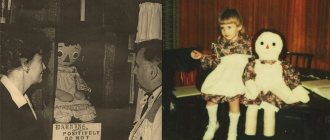Each person is unique - he has certain talents, but it happens that an action that is simple for most people becomes a real problem for some. And this does not always indicate low intelligence or developmental delay. So, in the case of dyscalculia, the reasons lie in a purely biological origin .
Dyscalculia or “mathematics dyslexia” refers to a series of disorders that are associated with dysfunction of the neural connections of the brain, which causes the further development of cognitive impairment and the psychopathology of dyscalculia.
How can this hinder the child in the future?
- During the training period, the student will demonstrate an inability to learn arithmetic and mathematical sciences in general.
- These people have difficulty interpreting numeric symbols and performing basic addition, subtraction, multiplication, or division calculations.
- A child with dyscalculia confuses numbers and signs and cannot count in his head or work with abstractions. He has difficulty doing tasks that rely on mathematical calculations.
- In adulthood, the disorder may manifest itself as problems related to time management.
- Having difficulties with coordination of movements.
However, such a diagnosis is not a death sentence. Most people cope with this feature of their brain and are realized in areas where the need for calculations is minimized. They often become artists, actors, linguists, or succeed in the philological field.
An experienced speech therapist will help you recognize dyscalculia in a timely manner and adjust your child’s educational program. A specialist will confirm or refute the diagnosis and help both the child and his parents cope with the situation.
Diagnosis of dyscalculia
Parents may independently suspect that their child has a disorder such as dyscalculia. Diagnosis of its specific type is made during a personal conversation between a speech therapist, doctor or psychologist and a child. He is asked to count to 10 or 20, choose larger or smaller numbers, do simple arithmetic operations, arrange numbers in increasing and decreasing order, name various geometric shapes, sort them by color. Further, depending on the identified disorders, an assumption is made about the type of dyscalculia and ways of its correction.
Possible complications
Arithmetic calculations are at the core of everyday life. This skill is especially important during the period of preschool preparation and training at school and secondary specialized institutions. At the heart of dyscalculia are disorders that lead to increasing poor performance in the exact sciences. In addition to unsatisfactory grades, this leads to a decrease in the desire for knowledge and absenteeism.
The main complication of the disease is refusal to master professions and find employment. Many children are forced to go to universities to major in the humanities, despite their desire for programming and other applied sciences.
Classification of dyscalculia
The most convenient classification of dyscalculia is:
- Practognostic – the inability to count objects or their designations.
- Graphic – difficulties when writing numbers and mathematical symbols, difficulty or complete impossibility of reproducing geometric shapes.
- Verbal – difficulties when it is necessary to name mathematical operations and concepts.
- Dyslexic – impairment of reading mathematical symbols.
- Operational – inability to perform arithmetic operations.
The described types of dyscalculia are convenient for developing an optimal strategy for its correction and prevention.
Description
Dyscalculia is a violation of the ability to study arithmetic with normal intelligence.
According to ICD-10 it has code F81.2. It manifests itself as an inability to recognize digital symbols, difficulties with addition, subtraction, multiplication and division. Combined with the delayed emergence of the ability to estimate the size of objects and recognize geometric shapes. Accompanied by a lag behind the school curriculum. Dyscalculia must be distinguished from acalculia - a secondary loss of the ability to work with numbers in children and adults after severe head injury, tumor or cerebral hemorrhage. Dyscalculia is detected in childhood when a child is learning to count and belongs to the category of disorders of the development of learning skills. It is detected to varying degrees in 6% of children, and is equally common in patients of both sexes. Often combined with attention deficit and dyslexia.
Reasons for development
Counting disorders are caused by genetic, psychological or organic reasons. In practice, most children exhibit a combination of several factors.
- Hereditary burden . Children often have a parent or close relative who also has dyscalculia. The genetic basis of the disorder has not yet been established.
- Negative learning experience . Difficulty in counting occurs under the influence of excessive or age-inappropriate demands, too strict punishment for mistakes, difficulties in the relationship between the child and the parent or teacher.
- General psychological factors . Dyscalculia often develops in children from dysfunctional families, formed against the background of family physical or emotional violence, overprotection, inconsistent or harsh authoritarian upbringing.
- Organic brain lesions . The causes of dysfunction of brain structures in dyscalculia of organic origin are intrauterine infections, intoxication of the mother during pregnancy, complications during gestation and childbirth.
Pathogenesis
At the initial stage of learning, dysfunction of the intraparietal sulcus plays an important role in the development of organic dyscalculia. Subsequently, damage to the posterior associative cortex, frontal lobes and subcortical regions, as well as deterioration of interhemispheric interactions, become obstacles to learning to count. Psychogenic difficulties in learning arise from psychological neglect, fear of punishment, and lack of self-confidence.
Classification
Taking into account the predominance of one or another type of disorder, 6 types of dyscalculia are distinguished:
- Lexical . The child learns arithmetic concepts well by ear, but has difficulty working with numbers, equations and examples when he sees them on paper.
- Verbal . The patient solves written problems normally, but has difficulty when trying to name mathematical categories or recognize them by ear.
- Graphic . The student successfully uses mathematical symbols in oral speech, but is lost when it comes to writing them.
- Practognostic . The child experiences difficulties when trying to transfer concrete examples to the level of abstractions or abstractions to the level of concrete examples.
- Ideognostic . The patient cannot carry out mathematical calculations in his head. To solve, he needs a factual basis: using objects, drawing or writing data on paper.
- Operating room . Symbolization suffers. The student successfully understands numbers, recognizes “more and less,” but does not remember numbers and special signs well.
In practice, pure types of dyscalculia practically do not occur; mixed forms predominate.
Prevention of dyscalculia
- Practognostic dyscalculia is prevented by teaching counting skills, performing arithmetic operations with pronouncing them, naming the result and showing the appropriate number of fingers, developing all types of memory and literate speech, spatial perception and motor coordination, learning to correlate a real object and its image.
- Prevention of graphic type dyscalculia is possible with the help of exercises to develop the perception of visual images, fine motor skills, coordination between vision and hand movements, training various types of memory, understanding the connection between an object and its image, and teaching mathematical terms.
- Verbal dyscalculia is prevented by teaching the child the names of mathematical operations and their essence, the ability to use them correctly in speech, the development of all types of memory, learning to understand the idea of the shape, color, size of objects, and the use of these concepts in speech.
- The dyslexic variant of dyscalculia can be prevented by developing the child’s visual perception, his ideas about color, shape, teaching him to recognize mathematical symbols and correctly name them, the meaning of these signs, developing memory and logical thinking.
- Operational dyscalculia for prevention requires learning to count, operate with numbers, use mathematical terms in speech and counting, develop speech, memory and thinking, and various types of perception.
Correction of dyscalculia
Most often, a speech therapist deals with the correction of dyscalculia. Also, if necessary, psychologists, pediatricians, and neurologists are involved. Classes can be held in specialized clinics, kindergartens, specialized groups or classes. For correctional classes, special game exercises are developed that teach counting, while simultaneously developing the child’s speech and thinking, his musical, visual, and learning abilities.
The development of coherent, full-fledged speech is an extremely important area of work for dyscalculia. Correction is carried out by expanding the vocabulary of children in parallel with teaching mathematical terms, their meanings and correct use. At the first stage, the concepts of less-more, the same, names of geometric shapes, generalizing the characteristics of objects are introduced. Next comes training in ordinal counting and the use of numbers in speech, comparison of objects and their quantities, a connection is formed between a number and its appearance in writing, the development of various types of memory, fine motor skills, and thinking.
When stable results in counting and comparison are achieved, the teacher moves on to teaching the simplest arithmetic operations, pronouncing and writing them, understanding the meaning of the problem, and the logic of the solution. Children's vocabulary and speech are expanding, and new ways of comparing objects are being taught. The concept of component parts, breaking an object into parts and putting it together from parts is introduced. Children learn to draw numbers and signs on paper. The development of motor skills, drawing skills, memory and speech continues.
Starting regular classes with a specialist in a timely manner will help eliminate the manifestations of dyscalculia in a child and increase his academic performance. The disorder is treated by a speech therapist-psychologist. Classes to correct the condition are conducted in groups or individually in a clinic or kindergarten. Quite often, groups are created to treat such children at centers that deal with the socialization of children with mental retardation. The therapy is carried out with the help of exercises that teach the child to count correctly in a playful way. The development of the patient’s speech is also necessary. During correction, various exercises are used that help to learn to visually perceive numbers, understand their sound names and master the principle of arithmetic operations. ↑ Examples Game with a clock. The child must move the arrows from number to number, pronouncing the name of each of them after the speech therapist. Gradually, the child will be able to connect the external designation of a number and its name. Determination of sizes. The child puts together piles of cubes and then must determine which of them contains more objects. If he successfully completes the task, he receives a reward. Shop game. The child plays the role of a salesman. The game is played not only in classes, but also at home. ↑ Prevention To reduce the likelihood of a disorder occurring, it is necessary to lead a correct lifestyle during pregnancy and breastfeeding. If a child has difficulties learning to count, it is necessary to urgently show him to a specialist.
Causes and symptoms
This disease can be diagnosed in early childhood. As soon as a child begins to develop his arithmetic abilities, one can notice the first signs that this issue is worth paying attention to. And the sooner dyscalculia is diagnosed, the more effective the actions will be.
This condition progresses with age and if it is missed in preschool age, then more obvious symptoms will appear at school. However, you should not wait for truly serious problems to take action.
Here is a basic list of symptoms in preschool age that may lead you to suspect a disorder :
- It is difficult for a child to learn to count. At the same time, you see that the issue is not the child’s laziness or stubbornness, but his sincere misunderstanding of the information.
- The child may, in principle, not understand what numbers are and what they are called. In his picture of the world, the symbol 4 will not be associated with the word “four”.
- He is not able to quickly answer the question of how many apples are on the table; in order to find the answer, he will have to count each of them individually.
- Children have difficulty using numbers in everyday situations. It is difficult for him to associate the number 3 with certain objects, for example, 3 books, 3 apples, and so on.
- If the child has already begun to write, then numbers will cause him great difficulty. He will not be able to write down numbers or write them down under dictation. It also happens that when only writing numbers, children begin to change their handwriting and even write numbers, turning them upside down.
- Errors in determining the shape of numbers are also common, so 9 and 6, 3 and 8 become barely distinguishable from each other. This also applies to identifying numbers by ear, for example, “nine” and “ten” sound the same to a person with dyscalculia.
- When listing numbers in order, the same number will be repeated two or more times. Omissions of certain numbers are also possible.
- The task of counting from 1 to 5 will also cause difficulties. Often children cannot determine where to stop, so they just keep counting.
- The child has difficulty classifying objects by their size or shape.
Another clear sign of a violation is the problem of counting from a certain number. The child will not be able to start listing numbers from 5. The child will have to first say the previous ones and only then begin to complete the task.
Naturally, this is just general information, but by observing your child, you can suspect something is wrong and promptly contact a specialist for help.









